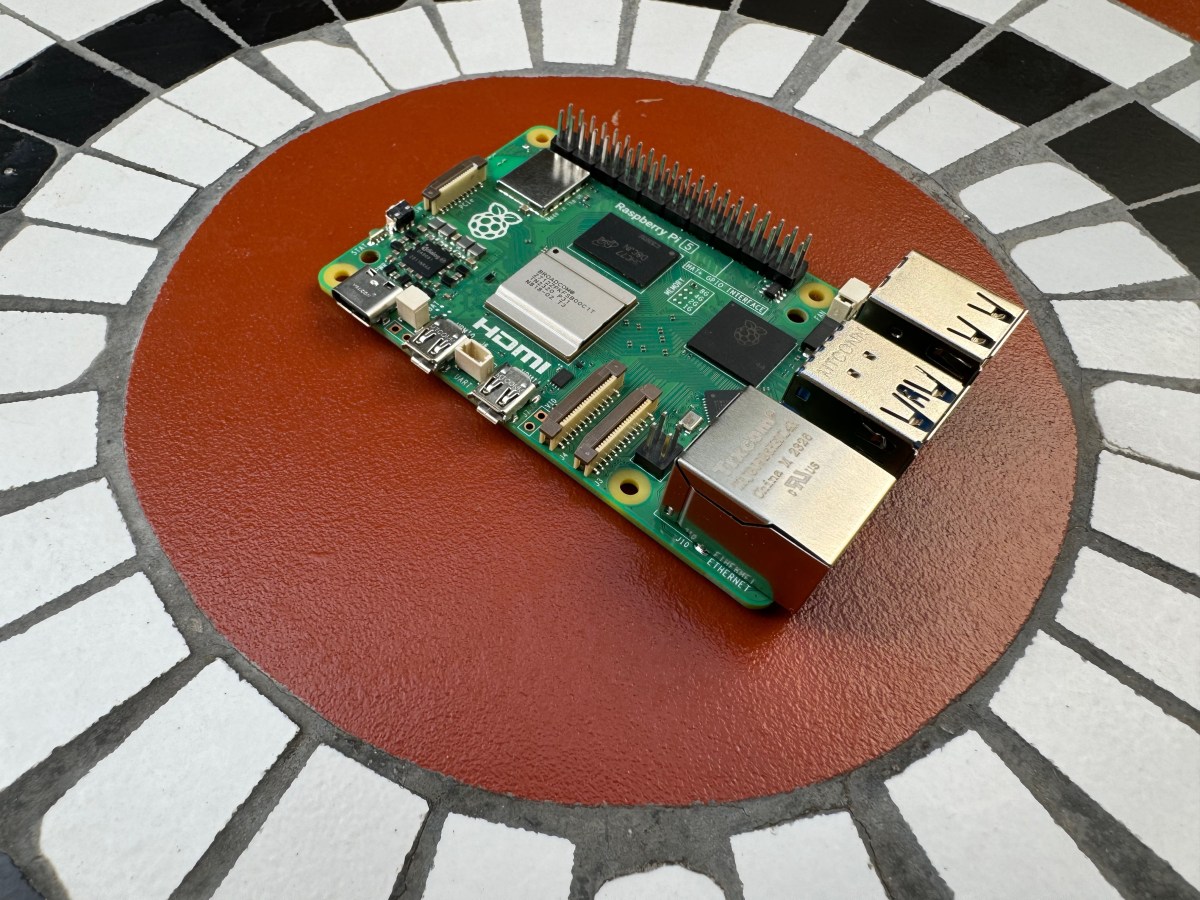Four years have passed since the release of the Raspberry Pi 4, and now the Raspberry Pi team is back with the new and powerful Raspberry Pi 5. This successor offers upgraded components with improved specifications and even incorporates custom silicon. If you’re not familiar with the original Raspberry Pi concept, let me explain. Since 2012, the Raspberry Pi Foundation and its commercial arm have been developing and selling affordable single-board computers that are about the size of a deck of cards. These computers are based on Arm systems on a chip and offer all the features you would expect from a full-size computer, including USB ports, HDMI output, Ethernet port, and more. Over the years, the Raspberry Pi has gained additional capabilities like Wi-Fi and Bluetooth support. Tech enthusiasts have utilized these small computers to create media servers, retro game consoles, interactive dashboards, robotics projects, and more. The Raspberry Pi is a fantastic tool for coding and networking beginners. In fact, companies have started using Raspberry Pi as industrial controllers or thin clients for office use. This widespread adoption has led to shortages due to supply chain issues and scalpers taking advantage of its popularity. Now, let’s take a close look at the Raspberry Pi 5’s specifications. It features a 64-bit quad-core Arm Cortex-A76 processor, running at 2.4GHz, with per-core L2 caches of 512KB and a shared L3 cache of 2MB. Like its predecessor, it supports Wi-Fi 5 (802.11ac), Bluetooth 5.0, Bluetooth Low Energy, and Gigabit Ethernet. The Raspberry Pi 5 also comes with two micro-HDMI ports, allowing you to connect two 4K displays with a 60Hz refresh rate and HDR support using just one Raspberry Pi. In terms of USB ports, it offers two full-size USB 3.0 ports with 5Gbps transfer speeds, two full-size USB 2.0 ports, and a USB-C port for power. What’s really exciting is that the Raspberry Pi team has introduced a new single-lane PCIe 2.0 interface, making it easier to add PCI Express peripherals. However, you’ll need an extension or adapter to utilize this interface. Power-over-Ethernet is also supported through a separate HAT. The Raspberry Pi 5 retains the usual 40-pin header and MIPI camera/display ports, with the latter being upgraded from 2 × 2 lanes to 2 × 4 lanes. Additionally, the performance of the microSD card slot has been doubled. In terms of pricing, the Raspberry Pi 5 comes in two variants: one with 4GB of RAM for $60 and another with 8GB of RAM for $80. It’s worth noting that the Raspberry Pi 4 is still available in configurations with 1GB, 2GB, 4GB, or 8GB of RAM, and will continue to be produced. When comparing models with the same amount of RAM, the Raspberry Pi 5 has a $5 price increase. The Raspberry Pi 5 marks the first time Raspberry Pi utilizes custom silicon. While the main system on a chip is still designed by Broadcom, the Raspberry Pi 5 incorporates a custom southbridge chip called the RP1. This chip handles I/O functions and replaces some functions previously handled by the main system on a chip. Previous Raspberry Pi models relied on I/O controllers from third-party companies. This move towards custom silicon demonstrates the Raspberry Pi team’s desire for more control over its components, thanks to the company’s scale and economic viability. In 2021, Raspberry Pi’s trading arm raised $45 million to invest in the supply chain and develop new products. The Raspberry Pi has been in high demand for years due to its unique offering. As for the Raspberry Pi 5, it will remain in production until 2035. Raspberry Pi CEO Eben Upton emphasized the value proposition of Raspberry Pi, stating that you can buy 100,000 units tomorrow. The Raspberry Pi 5 will join the existing lineup, and the Raspberry Pi 4 will continue to be produced. Units of the Raspberry Pi 5 will be available for purchase before the end of October. Production of the Raspberry Pi 5 is expected to ramp up, with millions of units on order, and production of the Raspberry Pi 4 and earlier models will be sustained.
Denial of responsibility! Vigour Times is an automatic aggregator of Global media. In each content, the hyperlink to the primary source is specified. All trademarks belong to their rightful owners, and all materials to their authors. For any complaint, please reach us at – [email protected]. We will take necessary action within 24 hours.


